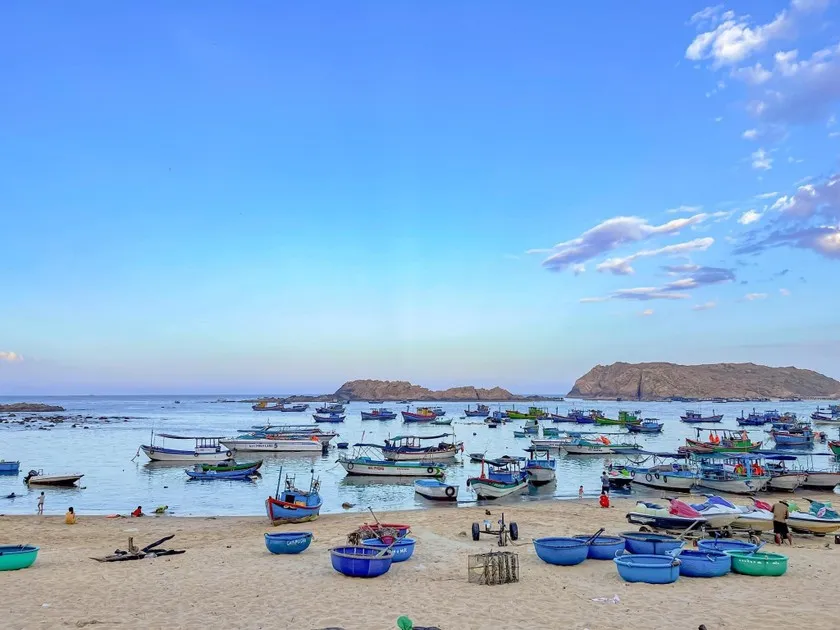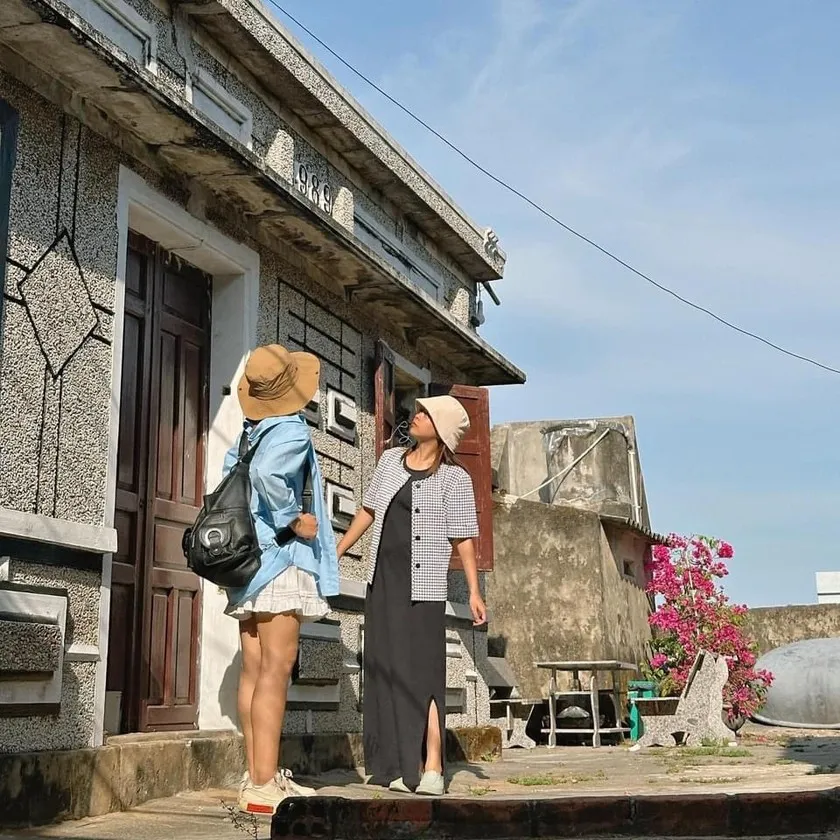Stepping into the coastal fishing villages of Vietnam is like entering another world, where life is deeply intertwined with the sea, and where gentle, honest people spend their days making a living from the ocean. Let’s explore the simple beauty and unforgettable experiences these charming villages offer.
For a long time, Vietnamese coastal fishing villages have attracted visitors with their untouched, peaceful beauty and unique cultural features. Here, you will not only admire the stunning natural landscapes but also have the opportunity to learn about the lives of the villagers, the children of the sea.
The Unique Beauty of Vietnamese Fishing Villages
Each coastal fishing village in Vietnam possesses a unique beauty, an irresistible charm. Some villages are nestled beside long stretches of white sand, with rows of green coconut trees and boats moored close together. Others are located on small islands, with simple wooden houses and winding narrow paths.

What’s special about these fishing villages is the harmony between the natural scenery and human life. You’ll easily encounter images of villagers busily engaged in their daily work, from fishing and mending nets to drying seafood. These activities are not only a livelihood but also an indispensable part of their lives.
One of the most attractive features for tourists in fishing villages is the small, winding alleys. Here, the daily life of the villagers unfolds in a lively and bustling manner.
Discovering the Culture and Life of Fishing Village People
Visiting a fishing village offers you the chance to learn about the culture and life of the local people. They are gentle, honest people, always willing to share stories about their lives. You can chat with fishermen about their arduous sea voyages, or listen to women recount their daily tasks.

The culture of fishing villagers is also expressed through traditional customs, practices, and festivals. One of the most important festivals is the cầu ngư festival (fishing festival), held annually to pray for favorable weather and abundant catches. This is an opportunity for villagers to express their gratitude to the sea and wish for a peaceful and prosperous new year.
Cuisine is also an indispensable part of fishing village culture. Fresh seafood dishes, prepared according to family recipes, will offer you unforgettable culinary experiences.
Experiencing Exciting Activities in Fishing Villages
In addition to exploring the scenery and culture, you can also participate in many exciting activities in the fishing village. You can rent a boat for fishing, go snorkeling to see coral reefs, or join fishing activities with local fishermen.
If you are an adventurous person, rent a motorbike and explore the beautiful coastal roads on your own. You will admire the majestic natural landscapes and discover small, charming fishing villages.

In the evening, you can join in fun and entertainment activities with the locals. You can enjoy fresh seafood at seaside eateries or participate in lively karaoke sessions.
Nhon Ly Fishing Village – A Must-Visit Destination in Binh Dinh
Nhon Ly, a coastal commune in Quy Nhon city, Binh Dinh province, is a prime example of the transformation of Vietnamese fishing villages. From a poor, little-known fishing village, Nhon Ly has become a famous tourist destination, attracting visitors with its pristine, peaceful beauty and unique cultural features.
Arriving in Nhon Ly, you will admire the characteristic steep roads, colorful mural walls, and vibrant red bougainvillea trellises. You can also visit the nearly 200-year-old ancient well, which once supplied water to the entire village.

Mr. Nguyen Tri, a local resident, has switched from fishing to tourism business. He shared: “Visitors coming here can go fishing, squid fishing at night. In the early morning, they can go to the fishing port to see people exchange and trade seafood, and then buy fresh seafood to cook themselves. Or visit and check-in at Tinh Xa Ngoc Hoa – home to the tallest two-bodied Quan Yin Buddha statue in Vietnam today.”
Nhon Ly is not only a tourist destination but also a testament to the change and development of Vietnamese coastal fishing villages. With the efforts of the government and local people, Nhon Ly is becoming increasingly attractive to tourists.
Conclusion
Exploring the life of Vietnamese coastal fishing villages is a memorable experience, helping you understand more about Vietnamese culture, history, and people. Come and feel the simple beauty, the hospitality of the villagers, and you will surely have unforgettable memories. Vietnamese coastal fishing villages are not only tourist destinations but also places that preserve traditional cultural values, which need to be preserved and promoted. Let’s join hands to help these villages maintain their inherent beauty and continue to develop sustainably.